The global average of reported cases and deaths continue to decline across the world. There are a few exceptions, most notably in Taiwan, Portugal, Australia, and the United States. It’s not entirely clear if we can continue to judge the global situation by comparing per capita case rates across countries. Many countries are winding down systematic testing efforts and enormous country-to-country variability exists regarding at-home antigen testing, like availability, usage, and official reporting. The true story will soon (if not already) be inaccurately reflected in the case graphs that we’ve become so accustomed to following.
In South Africa, the BA.4/5 wave is receding quickly. Deaths continue to increase 19%, but as the Financial Times figure shows below, each successive wave since Beta is less severe. While this is great news, it’s reported that there is even less urgency than before to get vaccinated. Given that only 31% of the population has the primary series, a big challenge lies ahead for public health officials.
Many eyes are on Portugal as BA.5 takes hold. Like South Africa, Portugal preceded their BA.4/5 wave with a huge BA.1 wave. So far, cases, hospitalizations, and deaths are all increasing and, in fact, are much higher than in South Africa. This only solidifies that a variant’s impact in one country will not necessarily be the same in another due to variability in demographics, environment, behaviors, and immunity.
United States
The “battle of Omicron” is currently taking place in the U.S. After our first massive BA.1 wave, BA.2 tried to take hold only to be overtaken by BA.2.12.1. Now, BA.4 and BA.5 are gaining traction very quickly and seem to be easily outcompeting the rest. Given recent lab studies, though, this isn’t a surprise. BA.4/5 are particularly good at escaping antibodies and reinfecting people previously infected with Omicron, as well as boosted individuals. Once BA.4/5 account for the majority of cases in the U.S., we should expect another (or extended) case surge. (It’s not entirely clear why BA.4/5 have not shown up on CDC’s variant tracker yet.)
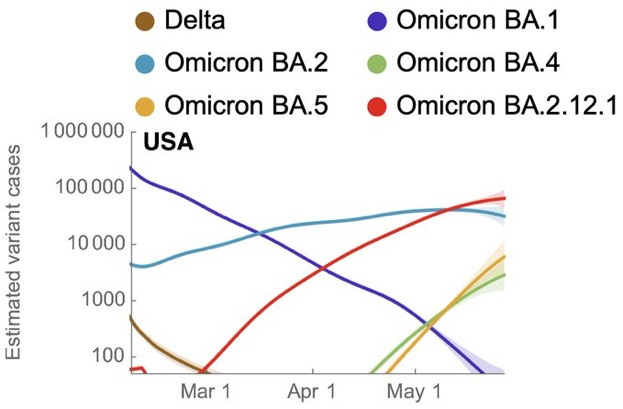
Currently, we are in a massive case surge. We are averaging 110,000 cases per day, but we know cases are vastly underreported. Using my back-of-the-napkin calculations, the true wave looks something like the graph below. These rough calculations were confirmed more eloquently in a recent pre-print in which scientists estimated the true case counts in New York City from April to May 2022. They found true case counts were 31 times higher than the official reported numbers.
While it looks like we may have peaked recently, this could be simply a reflection of the holiday weekend. We will need a few days to see if and how case reporting stabilizes.
Regionally, cases are stabilizing in the Northeast, but new hot spots have taken hold in the West and mid-Atlantic. South Carolina is the acceleration leader (+113%) followed by Montana (+110%), Arizona (+109%), New Mexico (+106%), and Alabama (+97%). The changing hotspot dynamic is reflected in national wastewater trends below.

Hospitalizations are certainly increasing and continue to lag case trends, but remain below all previous peaks. Nationwide, 26,804 people are hospitalized, and among these, 11% are in the ICU. (This is compared to the Omicron peak, in which 17% of reported cases were in the ICU.) Deaths have increased 22% in the past two weeks, which means 368 people are dying each day.
With regard to vaccine effectiveness, a strange pattern is starting to emerge—one that we may see more and more often: case rates among the boosted are higher than case rates among the vaccinated but not boosted. This is clearly displayed on the CDC website below. Don’t be surprised if boosted cases even pass the rate of unvaccinated cases soon.
This is not because boosters increase the risk of infection. Instead, several other factors are coming into play:
More at home antigen testing. We don’t have a good sense, at all, about at-home testing behaviors and subsequent biases. For example, those with a booster may be more likely get a PCR than those without a booster;
Unvaccinated and not boosted people were more likely to get infected during the Omicron wave, so they may be more protected against infection than the boosted right now;
We know vaccine protection against infection wanes over time, and the majority of Americans were boosted more than 6 months ago now; and,
Boosted people may be getting more and more comfortable letting their guard down, while other groups may have passed this stage long ago. As a result, the boosted group may truly be getting infected more now than before.
Regardless of the reason, vaccines continue to protect swimmingly well against severe disease and death. For example, unvaccinated people had 17 times higher risk of dying in March and April 2022 compared to vaccinated people.
Bottom line
We are in the middle of our second largest case surge and our fifth largest hospitalization surge. If you don’t want to get sick and/or want to protect those around you, wear a good mask. If you do get sick, even the sniffles, test yourself. Trust the positive test; if you’re negative, retest in 24-48 hours. If you’re high risk, please consider getting a prescription of Paxlovid (find a test-to-treat place near you here or call your physician). Stay healthy out there and break those transmission chains.
Love, YLE
“Your Local Epidemiologist (YLE)” is written by Dr. Katelyn Jetelina, MPH PhD—an epidemiologist, biostatistician, wife, and mom of two little girls. During the day she works at a nonpartisan health policy think tank, and at night she writes this newsletter. Her main goal is to “translate” the ever-evolving public health science so that people will be well equipped to make evidence-based decisions. This newsletter is free thanks to the generous support of fellow YLE community members. To support the effort, please subscribe here:






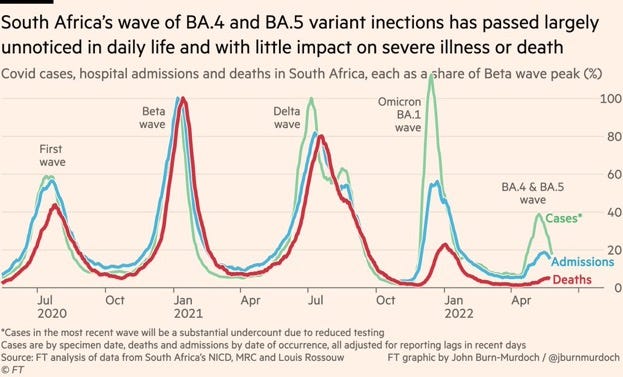
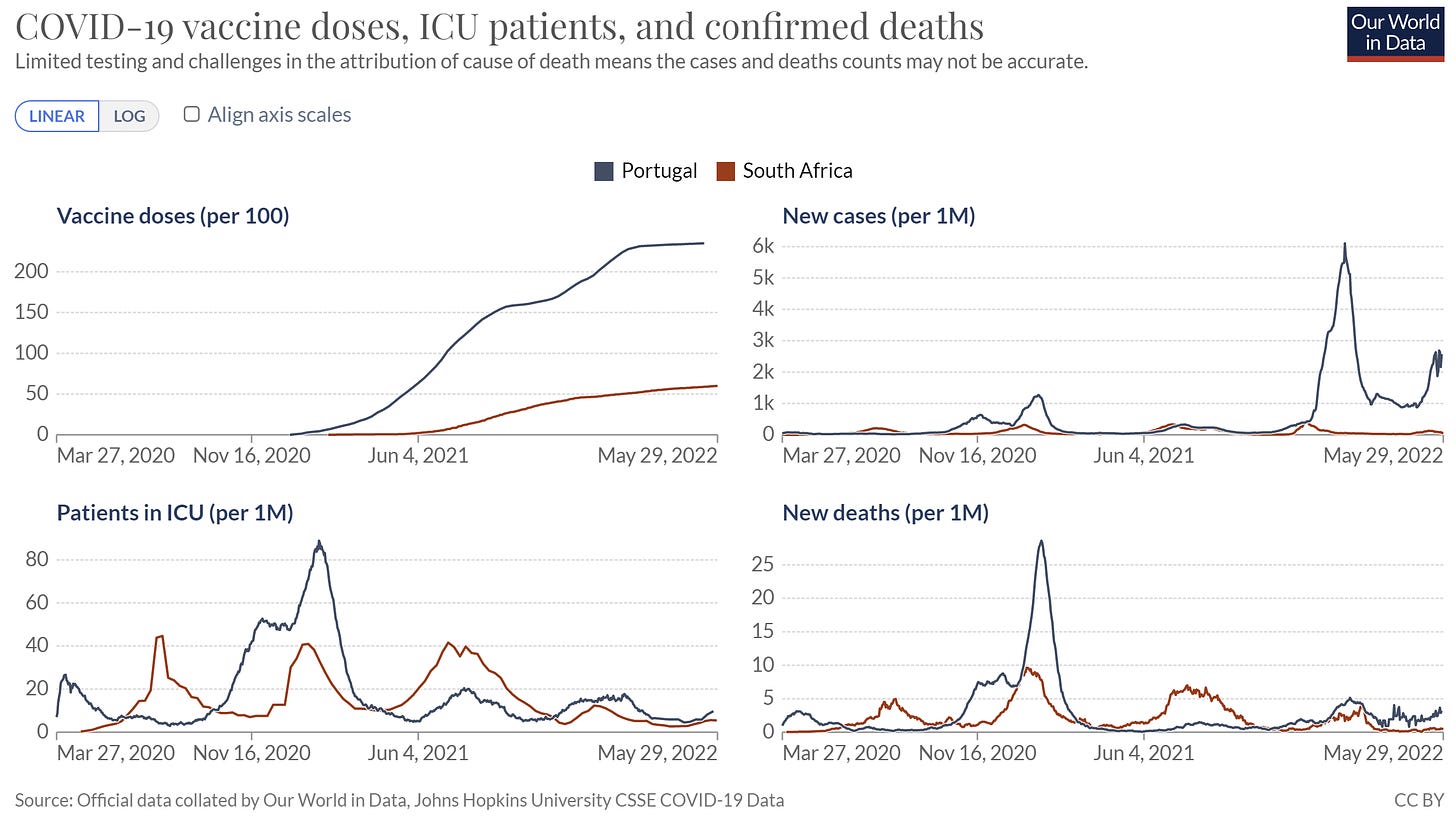


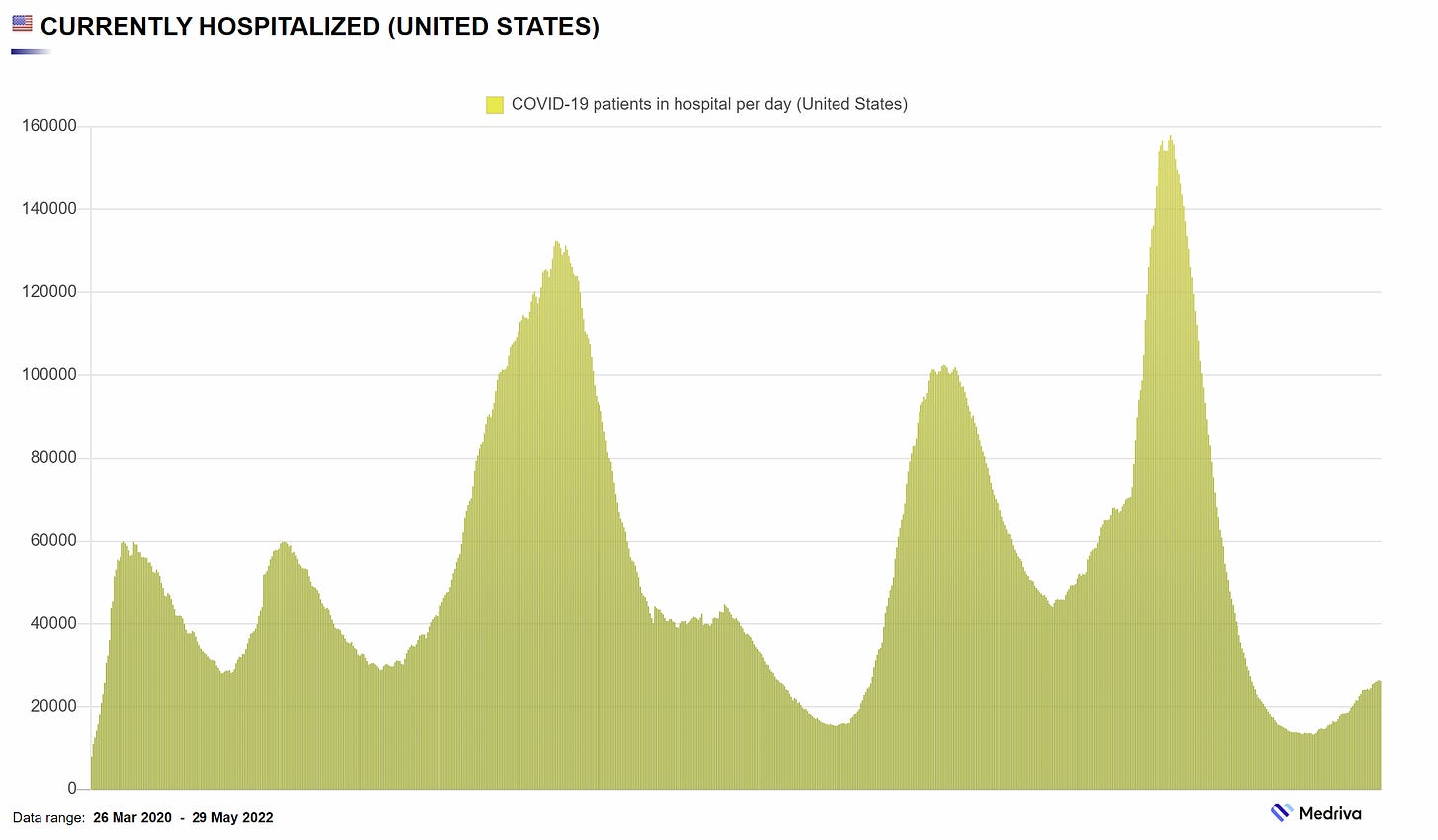
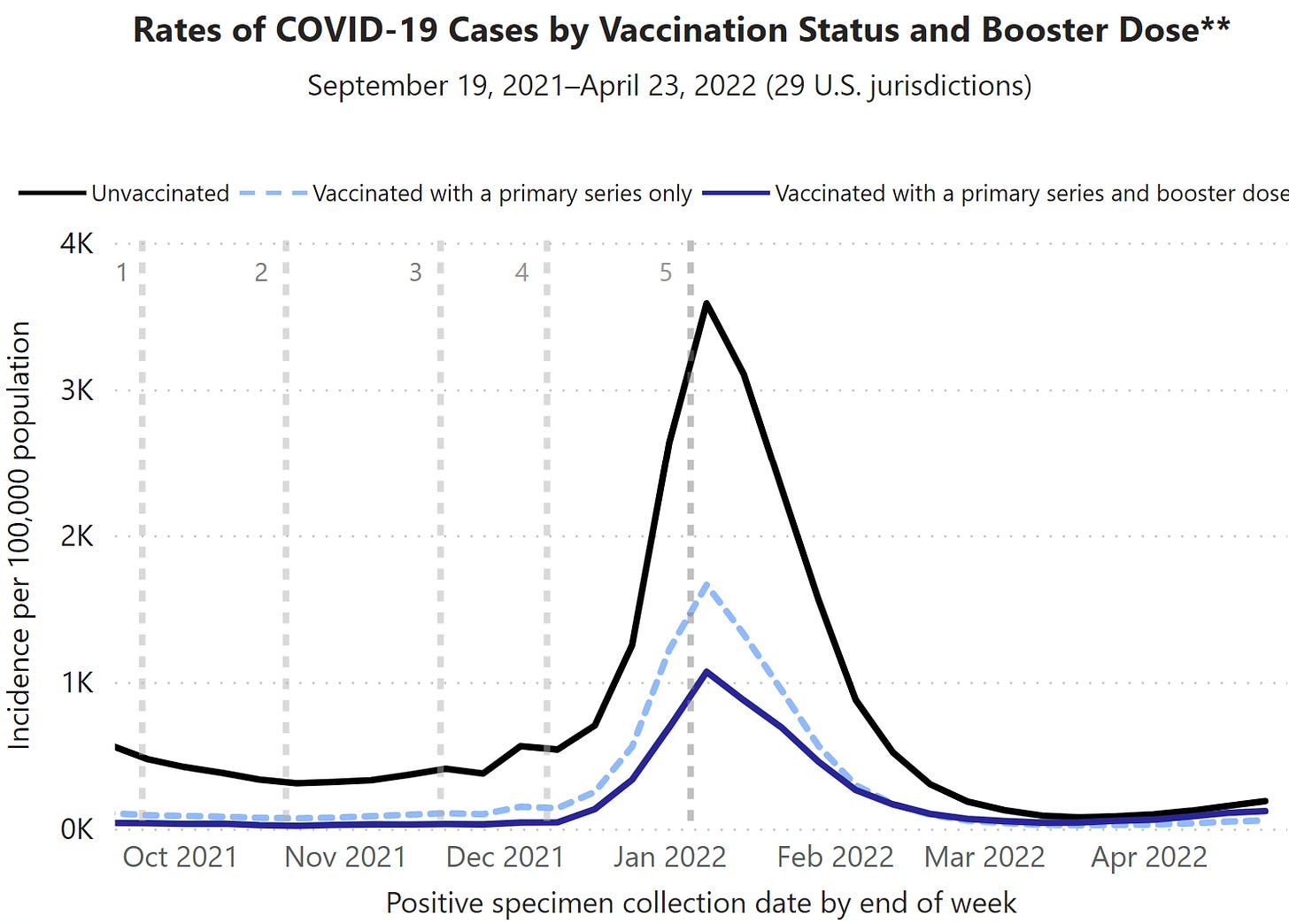
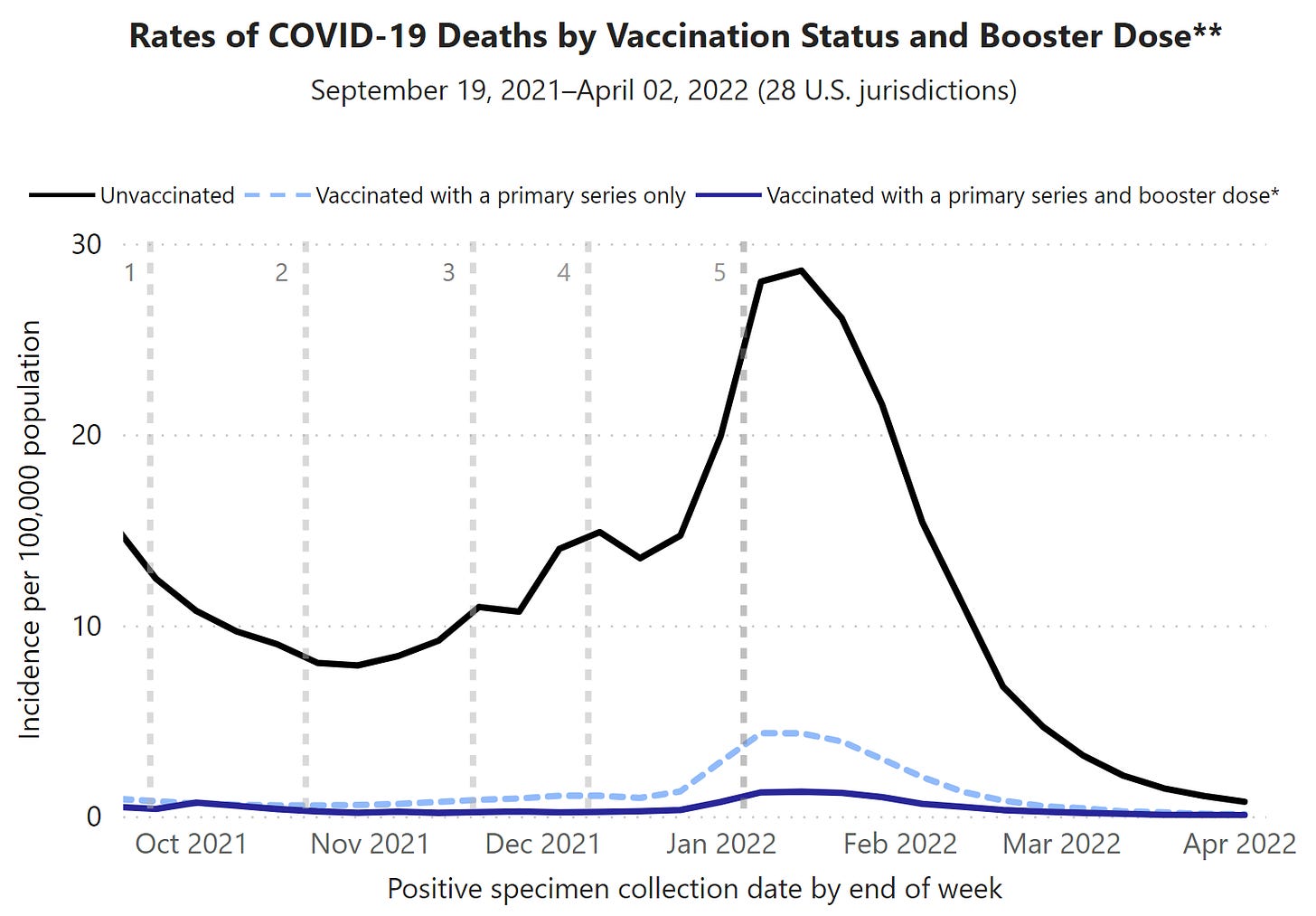
Thank you for your posts. I send people to them all the time. One literally said, "She is pure gold."
I'm working as a volunteer on a COVID-related issue: getting Evusheld to the immunocompromised. Gov't bought 875,000 doses 6 months ago and only 1/8 of it has been distributed to patients. Problem seems to be that too few patients and doctors know of its usefulness. I hope you'll put in a little mention of Evusheld and what it does in a blog post now and then, to raise awareness.
Our site is at rrelyea.github.io/evusheld/
It's a free public service -- no registration, no charge, just go there and get the information you need.
"If you’re high risk, please consider getting a prescription of Paxlovid" Just a couple of questions: 1) How is "high risk" defined in this case? I'm 74 but have no other risk factors, wear an N95 mask in all public indoor situations, and have had both boosters. Am I considered "high risk"? 2) Is Paxlovid something I should have on hand just in case I get infected, or should I ask my PC doc for it if and only if I test positive?
We're off on a two week European trip in two weeks, so I'm wondering whether or not I should just have some on hand. Thanks.